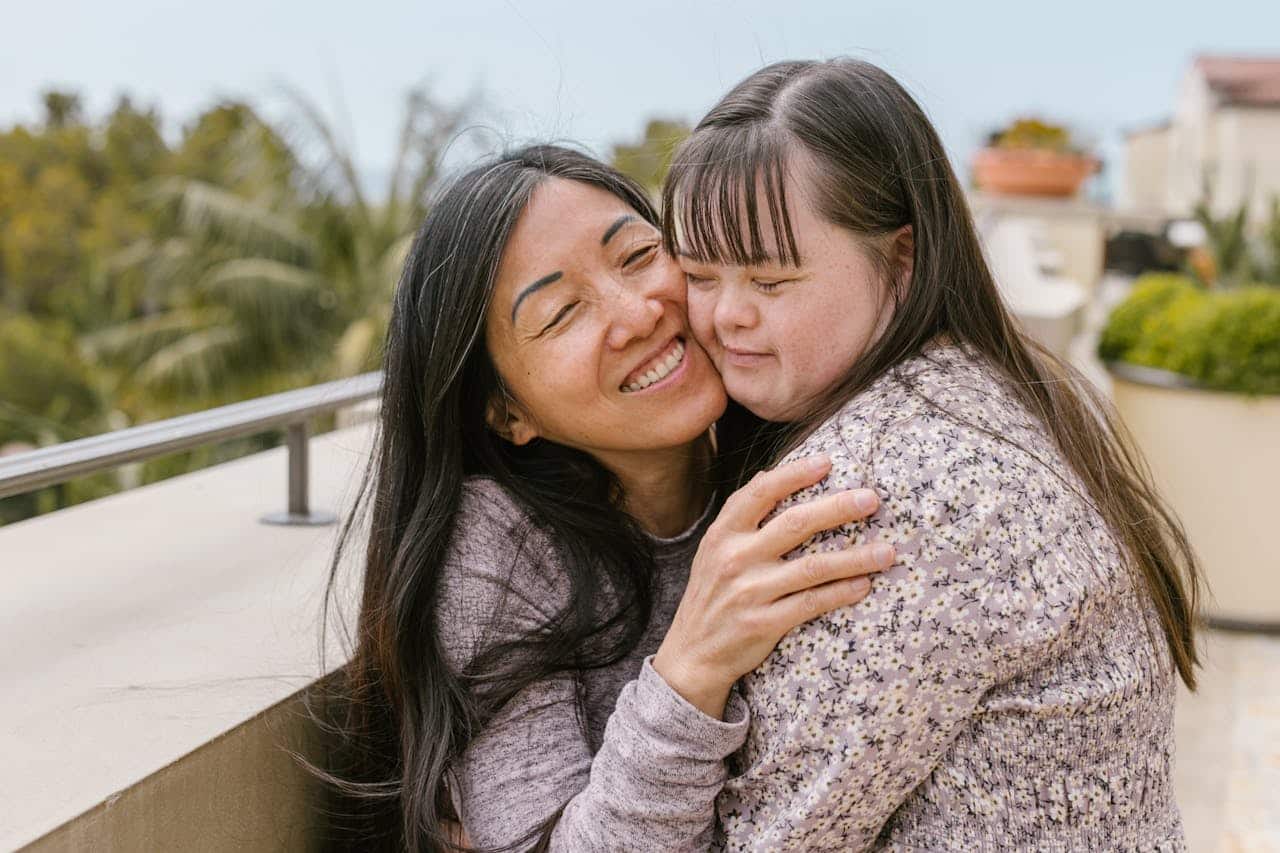Autism Spectrum Disorder (ASD) and Attention Deficit Hyperactivity Disorder (ADHD) are both neurodevelopmental disorders that impact children’s development. These conditions share several symptoms, but autism with ADHD also has distinct differences that require careful consideration when diagnosing.
Autism Spectrum Disorder affects social interaction, communication, and behavior, while ADHD primarily involves hyperactivity and inattention. Understanding the specific characteristics of both ADHD and autism is essential for proper diagnosis and treatment planning for autistic children, and autism support groups can play a crucial role in providing guidance and resources for families navigating these challenges.
Success Stories
“Move Up ABA has been a lifeline for our family. Before starting therapy, our son struggled with daily routines and communication. Now, he’s more independent and even initiated a conversation with a classmate for the first time! The progress we’ve seen in just six months is truly remarkable.”
- Emily R., Silver Spring, Accountant
“As a single dad, I was overwhelmed trying to manage my child’s behavior. The Move Up ABA team not only provided amazing support for my little girl but also taught me practical strategies to use at home. Their in-home sessions fit perfectly with our busy schedule. I’m so grateful for their patience and expertise.”
- Michael T., Rockville, Middle School Teacher
“We were hesitant about starting ABA therapy, but Move Up ABA’s approach put us at ease from day one. Our twins have made incredible strides in their social skills and self-regulation. The therapists are like extended family now, and we couldn’t be happier with our decision to work with them.”
- Aisha and James L., Simpson, Police Officers
Ready to start your child's journey to success? Schedule a free consultation today! 📞 Call (410) 497-8865.
ADHD Symptoms vs. Autism Symptoms: How to Tell the Difference
ADHD symptoms commonly include hyperactivity, impulsivity, and difficulties with attention. Children with ADHD may have trouble staying focused, and they may be excessively talkative or fidgety, which often makes diagnosing ADHD a challenge.
Autism symptoms, on the other hand, may present as limited social interaction, repetitive behaviors, or intense interest in specific topics. Data collection plays a crucial role in understanding these symptoms. While there may be some overlap in symptoms, such as impulsivity or difficulty with attention, these conditions are diagnosed differently based on the diagnostic criteria from the Diagnostic and Statistical Manual (DSM).
ADHD Diagnosis and Autism Spectrum Disorders Diagnosis

The process of diagnosing ADHD involves assessing behaviors related to inattention, hyperactivity, and impulsivity. Clinicians use detailed ADHD diagnostic criteria to determine if a child meets the requirements for an ADHD diagnosis.
Autism Spectrum Disorder is diagnosed by identifying persistent deficits in social communication and restricted, repetitive patterns of behavior. The diagnostic and statistical manual outlines specific criteria, emphasizing the importance of routine as a characteristic often associated with restricted and repetitive behaviors. These criteria help differentiate ASD from other mental disorders and guide clinicians in making a proper diagnosis.
Comorbid ADHD and Autism Spectrum Disorder
A child can have both ADHD and autism, known as comorbid ADHD. Children with comorbid ADHD and autism may display symptoms of both conditions, such as hyperactivity, inattention, and social communication challenges.
Diagnosing ADHD in children with autism can be particularly difficult due to the overlap in symptoms between the two disorders. A thorough evaluation is necessary to ensure that both conditions are appropriately addressed, using therapy techniques tailored to the child’s needs, as treating ADHD alone may not fully support the child’s development.
Treating ADHD and Autism: Approaches and Considerations
To treat ADHD, healthcare professionals often recommend a combination of behavioral therapy and medication. Stimulants and non-stimulants are commonly prescribed to manage hyperactive and impulsive symptoms.
Autistic children may benefit from therapies that improve social skills, communication, and adaptive behaviors. Additionally, emphasizing the importance of routine can provide stability and predictability, which are often beneficial for children on the autism spectrum. A tailored treatment plan for children with ADHD and autism is crucial to address each child’s unique needs.
The Role of the Diagnostic and Statistical Manual in Diagnosis
The Diagnostic and Statistical Manual (DSM) provides clear diagnostic criteria for both ADHD and autism spectrum disorders. This guide is essential for clinicians to diagnose accurately and offer appropriate interventions.
Both ADHD and autism spectrum disorders are categorized as neurodevelopmental disorders in the DSM. Understanding the criteria for these conditions, including the age range during which symptoms typically emerge, helps clinicians differentiate between similar symptoms and ensures that each disorder is properly diagnosed and treated.
The Importance of Early Diagnosis for ADHD and Autism Spectrum Disorders
Early diagnosis of ADHD and autism spectrum disorders is crucial for effective intervention. Identifying these conditions early on can lead to better treatment outcomes and support for children and their families.
Autistic children and those with ADHD benefit from early behavioral interventions, including autism treatment, that help improve communication, social skills, and academic performance. The sooner a diagnosis is made, the sooner children can receive the help they need to thrive.
Understanding Pervasive Developmental Disorder and Autism Spectrum

Pervasive Developmental Disorder (PDD) was a former diagnosis used to describe autism spectrum disorders. While PDD is no longer a formal diagnosis, it is still relevant in understanding the history and evolution of the autism spectrum, particularly in approaches like therapy for children to address developmental challenges associated with these conditions.
Autism spectrum disorder is now the primary term used to describe a range of developmental disorders, including what was previously known as PDD. This shift allows for a clearer understanding of the diverse nature of autism spectrum disorders.
Hyperactive and Impulsive Symptoms: Common in ADHD and Autism
Hyperactivity and impulsivity are key symptoms of ADHD that often manifest as excessive talking, fidgeting, and difficulty staying still. These behaviors can sometimes be mistaken for social challenges seen in children with autism.
Autistic toddlers and children may display hyperactive and impulsive symptoms as part of their overall behavioral patterns. It is essential to evaluate the full range of behaviors to determine whether these symptoms are tied to autism or ADHD.
Neurodevelopmental Disorders: A Broader Look
Neurodevelopmental disorders like ADHD and autism spectrum disorders are often diagnosed in childhood and can persist into adulthood. These conditions affect brain development and impact behaviors, learning, and social functioning.
Diagnosing neurodevelopmental disorders requires a comprehensive evaluation of a child’s symptoms and history. Understanding these disorders’ impact on development is essential for providing appropriate care, such as ABA therapy, and intervention.
Diagnosing ADHD and Autism: The Challenges
Diagnosing ADHD and autism can be a complex process due to the overlapping symptoms and behaviors. Healthcare professionals must rely on detailed diagnostic assessments and input from parents and teachers to determine the presence of one or both disorders.
The process involves evaluating a child’s developmental history, behavior, and symptoms. Accurate diagnosis ensures that children receive the right interventions tailored to their needs.
The Importance of Behavioral Therapy in ADHD and Autism Treatment
Behavioral therapy is a cornerstone of treatment for both ADHD and autism spectrum disorders. This approach focuses on teaching children new skills, managing challenging behaviors, and improving communication.
In children with ADHD, behavioral therapy may address issues like impulse control, attention regulation, and social interactions. For autistic children, treatment often focuses on improving social skills, communication, and coping mechanisms.
Medication and Treatment for ADHD and Autism

Autistic children may also benefit from medication, although the approach varies depending on the individual’s needs. Medications like selective serotonin reuptake inhibitors (SSRIs) and antipsychotic drugs may be used to help manage anxiety, irritability, or other behavioral symptoms associated with autism. However, it’s important to consider insurance coverage, as it can impact access to these medications and therapies, depending on the specific policy and provider.
Autistic children may also benefit from medication, although the approach varies depending on the individual’s needs. Medications like selective serotonin reuptake inhibitors (SSRIs) and antipsychotic drugs may be used to help manage anxiety, irritability, or other behavioral symptoms associated with autism.
Autism Spectrum Disorder: Early Signs and Detection
Autism spectrum disorder (ASD) is often diagnosed in early childhood, with signs typically emerging before the age of three. Early detection can greatly improve the effectiveness of interventions, making it easier to support children in developing crucial social and communication skills.
ASD symptoms vary widely, but some common early signs include difficulty making eye contact, limited speech development, and resistance to changes in routine. Early intervention is key to helping children with ASD achieve their full potential.
How ADHD and Autism Affect Education
Children with ADHD and autism spectrum disorder often face unique challenges in educational settings. ADHD can make it difficult for children to focus on tasks, follow instructions, and stay organized in school.
Autistic children may struggle with communication, social interactions, and understanding social cues, which can affect their ability to engage with peers and teachers. Specialized educational programs and individualized support plans are essential for both ADHD and autistic children to succeed academically.
Comorbidity of ADHD and Autism Spectrum Disorder
Comorbidity refers to the presence of two or more disorders in an individual. Children with both ADHD and autism may experience a combination of symptoms that complicate their diagnosis and treatment.
Clinicians need to consider both ADHD and autism when developing a treatment plan for children with comorbid conditions. Addressing both sets of symptoms can lead to better behavior, communication, and overall development outcomes.
The Role of Family Support in Managing ADHD and Autism
Family support plays a crucial role in managing ADHD and autism spectrum disorders. Parents and caregivers can help children by providing consistent routines, reinforcing positive behaviors, and seeking appropriate treatment options.
Understanding ADHD and autism is vital in offering the right support. Families who are well-informed about these conditions can better advocate for their children’s needs and ensure they receive the care they deserve.
The Impact of ADHD and Autism on Mental Health

Both ADHD and autism spectrum disorders can significantly impact a child’s mental health. Children with ADHD may experience feelings of frustration, anxiety, or low self-esteem due to difficulties with attention and behavior.
Autistic children may also struggle with mental health challenges, particularly anxiety and depression, due to difficulties with social interactions and communication. Early intervention and support are vital to improving mental health outcomes for children with these disorders.
Long-Term Outlook for Children with ADHD and Autism
The long-term outlook for children with ADHD and autism can vary depending on the severity of their symptoms and the interventions they receive. Children can lead fulfilling and productive lives with the right treatment and support.
However, some children may continue to face challenges into adulthood, especially if ADHD or autism symptoms are not adequately addressed. Ongoing care and support are essential to help individuals with ADHD and autism navigate daily activities and achieve success.
Identifying ADHD and Autism Early: Benefits for Development
Early identification of ADHD and autism spectrum disorders can significantly enhance a child’s development. When diagnosed early, children have better access to targeted interventions that can improve communication, social skills, and academic performance.
With timely support, children with both ADHD and autism spectrum disorders can acquire skills that help them navigate daily challenges more effectively. Early intervention not only boosts their chances for success but also improves their overall quality of life.
The Role of Diagnostic Criteria in Accurate Diagnosis
Diagnostic criteria for ADHD and autism are outlined in the Diagnostic and Statistical Manual (DSM), which serves as the standard for clinicians. This manual ensures that both conditions are diagnosed based on well-defined, evidence-based criteria to improve diagnosis accuracy.
The DSM provides a framework for differentiating between ADHD and autism spectrum disorders, especially when symptoms overlap. Accurate diagnosis using these criteria allows for more effective treatment and management of both conditions.
ADHD and Autism Spectrum Disorder in Adults
While ADHD and autism spectrum disorders are typically diagnosed in childhood, these conditions can continue into adulthood. Adult individuals with ADHD may continue to experience symptoms like inattention, impulsivity, and hyperactivity, which affect their professional and personal lives.
For adults with autism spectrum disorders, challenges may persist in areas such as social interaction and communication. However, many individuals with both ADHD and autism can lead successful adult lives with the right support systems in place.
Social and Emotional Challenges in ADHD and Autism

Children with ADHD and autism often face significant social and emotional challenges. ADHD symptoms such as impulsivity and inattentiveness can lead to difficulties in peer relationships and academic achievement.
Autistic children may struggle with understanding social cues, making friends, and adapting to new environments. These social and emotional hurdles require specialized support to help children and families navigate the complexities of both conditions.
Supporting Families of Children with ADHD and Autism
Families of children with ADHD and autism benefit from strong support networks, as these conditions can create challenges in daily life. Support groups, therapy, and educational resources can help families understand how to best meet their child’s needs.
Providing consistent routines, fostering positive reinforcement, and working closely with healthcare providers are key strategies for families to effectively support their children. Family involvement is critical in managing the symptoms of ADHD and autism and ensuring long-term success.
ADHD vs. Autism: Understanding the Core Differences
While ADHD and autism spectrum disorders share some symptoms, such as difficulty with attention and social interaction, the core differences lie in the causes and nature of the conditions. ADHD is primarily characterized by issues with attention, hyperactivity, and impulsivity, often stemming from brain functioning.
Autism, on the other hand, is a spectrum disorder that affects social communication, behavior, and sensory processing. Understanding these fundamental differences is essential for determining the best course of treatment and providing the appropriate support for each condition.
The Importance of Comprehensive Evaluations for ADHD and Autism
A comprehensive evaluation is essential for accurately diagnosing ADHD and autism spectrum disorders. Clinicians must assess a child’s developmental history, behavior, and functioning across multiple environments, such as at home and in school, to make a thorough diagnosis.
Through careful observation and input from parents, teachers, and specialists, clinicians can differentiate between ADHD and autism spectrum disorder and identify any potential comorbidities. A comprehensive evaluation ensures that all aspects of a child’s development are considered when diagnosing and treating these disorders.
Addressing the Needs of Children with ADHD and Autism
Children with ADHD and autism often require individualized treatment plans that address their unique needs. Behavioral therapies, speech and language interventions, and social skills training are all common approaches to help children overcome challenges related to communication, behavior, and socialization.
It is important to recognize that every child with ADHD and autism is different, so treatments must be tailored to suit their specific strengths and difficulties. A personalized approach ensures that each child receives the necessary tools to succeed.
ADHD and Autism Treatment Options: A Holistic Approach
A holistic approach to treating ADHD and autism involves not only medical treatments but also lifestyle adjustments that support a child’s overall well-being. Creating a structured environment, providing consistent routines, and promoting physical health are all part of a comprehensive treatment plan.
In addition to medication and therapy, nutrition, exercise, and sleep can play a vital role in managing ADHD and autism symptoms. A balanced, holistic approach helps children thrive both physically and emotionally while managing their behavioral challenges.
The Growing Understanding of ADHD and Autism Spectrum Disorders
As awareness of ADHD and autism spectrum disorders grows, more people are becoming informed about the challenges these conditions present. Public awareness campaigns and educational resources are helping families, educators, and healthcare providers better understand how to recognize and treat these disorders.
Ongoing research into the causes, symptoms, and treatments for ADHD and autism continues to improve the quality of care for those affected. This growing understanding ensures that individuals with ADHD and autism receive the support they need to lead fulfilling lives.
Conclusion
Successfully managing ADHD and autism spectrum disorders requires a combination of early diagnosis, appropriate treatment, and strong family support. A tailored approach that includes behavioral therapy, medication, and individualized education plans can significantly improve outcomes for children with these conditions.
By embracing a holistic treatment model, families and healthcare professionals can work together to help children with ADHD and autism lead successful, fulfilling lives. Understanding both conditions and their symptoms is key to providing the best possible care and support.







